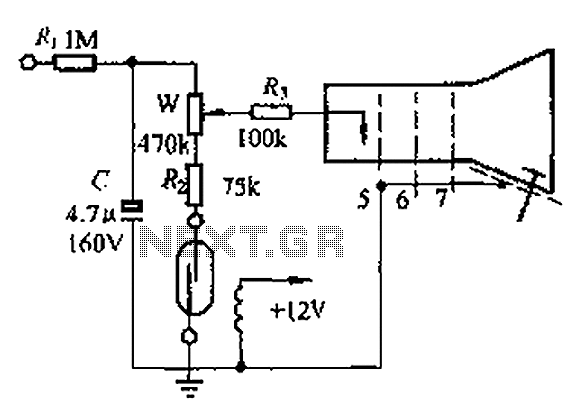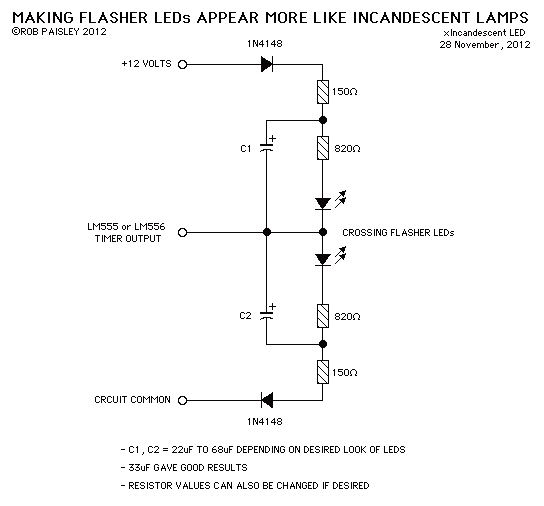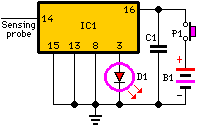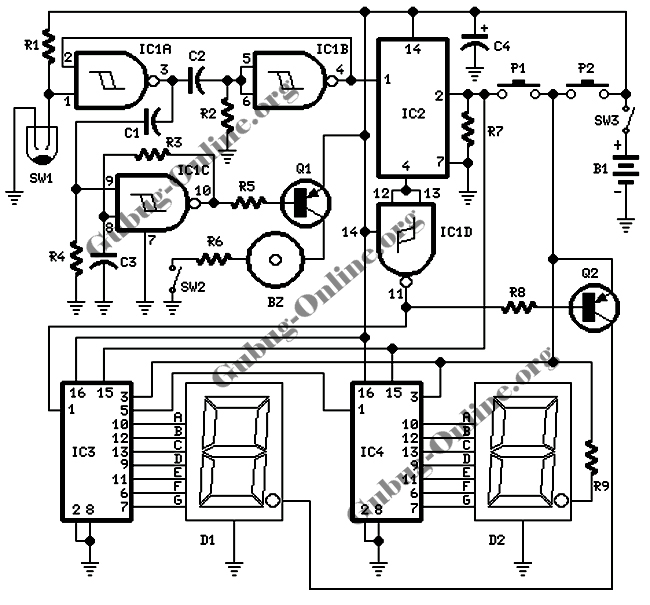
100W Inverter Circuit

This is a 100 Watt inverter circuit designed with a minimal number of components. The circuit utilizes the CD4047 integrated circuit from Texas Instruments to generate 100 Hz pulses, and it employs four 2N3055 transistors to drive the load. The CD4047 is configured as an astable multivibrator, producing two pulse trains that are 180 degrees out of phase at a frequency of 100 Hz.
The 100 Watt inverter circuit is an efficient solution for converting DC power to AC power using a straightforward design. At the heart of the circuit is the CD4047 IC, which serves as the pulse generator. It is configured in astable mode, meaning it continuously oscillates without requiring any external triggering. This configuration allows it to produce two square wave outputs that are 180 degrees out of phase, essential for driving the push-pull configuration of the transistors effectively.
The four 2N3055 transistors are arranged in a push-pull configuration, which enables them to alternate in switching the load on and off, thereby generating the desired AC output. Each transistor is capable of handling significant current and power, making them suitable for this application. When one transistor is turned on, the other is turned off, ensuring that the load receives alternating current.
To further enhance the performance of the inverter, appropriate biasing resistors are used to control the base current of the 2N3055 transistors, ensuring they operate efficiently within their specified limits. Additionally, a transformer may be employed at the output stage to step up the voltage to the desired level for the load, depending on the application requirements.
Overall, this inverter circuit is a practical example of using a minimal component count to achieve effective power conversion, making it suitable for various applications where AC power is needed from a DC source. Proper attention to component ratings and circuit layout will ensure reliable operation and longevity of the inverter system.Here is a 100 Watt inverter circuit using minimum number of components. Here we use CD 4047 IC from Texas Instruments for generating the 100 Hz pulses and four 2N3055 transistors for driving the load. The IC1 Cd4047 wired as an astable multivibrator produces two 180 degree out of phase 100 Hz pulse trains..
🔗 External reference
The 100 Watt inverter circuit is an efficient solution for converting DC power to AC power using a straightforward design. At the heart of the circuit is the CD4047 IC, which serves as the pulse generator. It is configured in astable mode, meaning it continuously oscillates without requiring any external triggering. This configuration allows it to produce two square wave outputs that are 180 degrees out of phase, essential for driving the push-pull configuration of the transistors effectively.
The four 2N3055 transistors are arranged in a push-pull configuration, which enables them to alternate in switching the load on and off, thereby generating the desired AC output. Each transistor is capable of handling significant current and power, making them suitable for this application. When one transistor is turned on, the other is turned off, ensuring that the load receives alternating current.
To further enhance the performance of the inverter, appropriate biasing resistors are used to control the base current of the 2N3055 transistors, ensuring they operate efficiently within their specified limits. Additionally, a transformer may be employed at the output stage to step up the voltage to the desired level for the load, depending on the application requirements.
Overall, this inverter circuit is a practical example of using a minimal component count to achieve effective power conversion, making it suitable for various applications where AC power is needed from a DC source. Proper attention to component ratings and circuit layout will ensure reliable operation and longevity of the inverter system.Here is a 100 Watt inverter circuit using minimum number of components. Here we use CD 4047 IC from Texas Instruments for generating the 100 Hz pulses and four 2N3055 transistors for driving the load. The IC1 Cd4047 wired as an astable multivibrator produces two 180 degree out of phase 100 Hz pulse trains..
🔗 External reference





